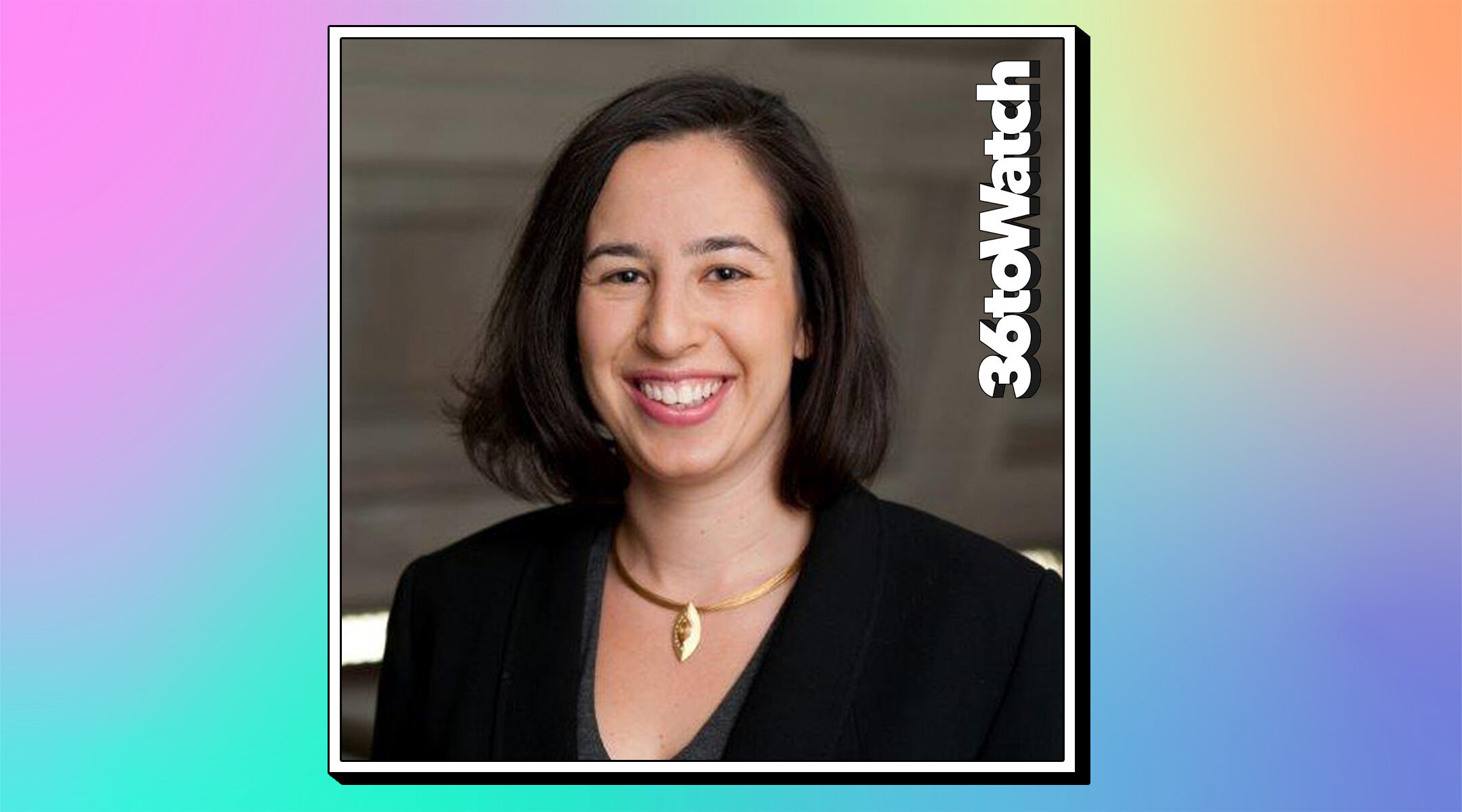Rabbi Mia Simring, 41, is a rabbi and a Jewish chaplain at Rikers Island, New York City’s largest and most notorious jail complex. Simring, who lives on the Upper West Side with her family, says she was inspired to become a chaplain when her mother was hospitalized with cancer. “I felt very much like I wanted to be there at the most intense moments and not just tragic moments, but really joyful moments as well,” she says. Simring became a chaplain at Rikers in 2018 where, she says, “I get to talk to people and I get to pray with people. A lot of it is also explaining the diversity of Jewish life. People have a lot of questions about what it means to be Jewish. Just getting into those conversations and using them as springboards for these pastoral encounters can be really powerful.”
For the full list of this year’s 36 to Watch — which honors leaders, entrepreneurs and changemakers who are making a difference in New York’s Jewish community — click here.
Was there a formative Jewish experience that influenced your life path?
I trained in healthcare settings throughout rabbinical school and after, but over the years my activism was also maturing. I was lead organizer of a “moral minyan” against ICE [U.S. Immigration and Customs Enforcement] detention with T’ruah: The Rabbinic Call for Human Rights; it gained a lot of momentum and we had some amazing speakers and performers.
This story is part of JTA's coverage of New York through the New York Jewish Week. To read more stories like this, sign up for our daily New York newsletter here.
The more the social injustices of the world started to stand out to me, the more I wanted to be involved. I started to look for ways that I could use what skills I had as a rabbi to provide direct service to vulnerable people. I’m less able to fully embody that activist side in my work now, but to really to be in there [at Rikers] with a lot of people who feel so isolated and so forgotten is really powerful for me. It gives me a good feeling of going something for those who are sort of at the bottom of society and need help and can’t always access it.
What was your best experience as a Jewish New Yorker?
Being raised here and raising my children here
What are three spots in NYC that all Jewish New Yorkers should visit?
I grew up very secular and I grew up in Gramercy. I used to walk through the East Village a lot and there was sort of a spot that always inspired me, which was Emma Goldman’s historic home. These things that seems so radical at the time, like the 40-hour work week and having a weekend and workers’ rights, are now what we take for granted. To think about the Jewish immigrant community that my family really came out of, and that we all — Jewish and non-Jewish — benefited from always sort of gave me a little bit of a nice energy.
Another spot would be tashlich at the Hudson River. It’s just so much energy, so many different Jewish groups kind of end up in the same place and it’s really inspiring and uplifting.
Thirdly, the tailor statue in the Garment District. When my grandmother’s family came over, her mom was a garment worker doing piecework, which is now considered sweatshop conditions because you got paid by how much you produce and not by your time and labor. Most garment workers now are Asian and Latina women, and it reminds me that we’ve gone through many waves of people making clothes who are frequently from disenfranchised groups. It’s a moment for solidarity between all of us.
What is your favorite book about New York?
It’s always the last book I read for me, so the last New Yorky book I read was “This Time Tomorrow” by Emma Straub. I also really love “Tepper Isn’t Going Out” by Calvin Trillin because in college I got a car, and then I had to figure out how to park it when I would come home and visit, and that is a book about parking in New York City.
The New York Jewish Week brings you the stories behind the headlines, keeping you connected to Jewish life in New York. Help sustain the reporting you trust by donating today.





